#SleepBetterFeelBetter: Hospital’s Sleep Navigators reinforce sleep as a vital sign
by sleepadmin | Apr 26, 2017 | SleepApnea.org
Note: The American Sleep Apnea Association is proud to include Kristina Weaver on our team as one of our all star AWAKE coordinators.
 On World HeHospital Sleep Navigators make sleep a vital signalth Day, we praised the idea of making sleep health a part of vital sign collection during each and every doctor’s visit.
On World HeHospital Sleep Navigators make sleep a vital signalth Day, we praised the idea of making sleep health a part of vital sign collection during each and every doctor’s visit.
Why? Because sleep health itself is an indicator of general overall health and wellness. When sleep is poor, chances are extremely good it’s due to an undetected or untreated health problem.
It might be an undiagnosed medical condition, poor personal habits, an underlying sleep disorder, medication problems, even mental health concerns.
But if doctors aren’t asking, and patients aren’t telling, how is anyone going to know what’s really going on?
We continue our insistence on taking sleep seriously this week as part of Sleep Awareness Week. Fittingly, the theme for this year’s Sleep Awareness Week is “Sleep Better, Feel Better” (#SleepBetterFeelBetter in Twitter).
Which is exactly our point! If we can address problems with sleep (either due to lack of sleep or because of daytime sleepiness), we can certainly expect to address a wider set of health-related complaints as well.
Sleep is Vital
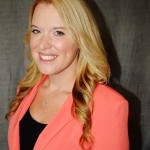 We are not alone in this endeavor to make sleep a vital sign: Kristina Weaver is a sleep specialist at Parrish Healthcare in Titusville, FL who has developed a program for the hospital which is designed with this very effort in mind.
We are not alone in this endeavor to make sleep a vital sign: Kristina Weaver is a sleep specialist at Parrish Healthcare in Titusville, FL who has developed a program for the hospital which is designed with this very effort in mind.
Weaver is a sleep technologist and EMT-paramedic (EMPT) holding a Bachelor’s degree in Healthcare Administration. Joining a team of 3 hospitalists overseen by Dr. Miguel Rivera, she developed the Sleep Navigator program at Parrish in 2015 after recognizing that most seriously ill patients have multiple health problems (co-morbidities) which are negatively associated with sleep in some way.
She also noted the way the medical field is changing, with patient-centered and outcome-oriented results a higher priority after decades of doctors following a fee-for-service model. Weaver sought to use sleep health as an indicator (or vital sign) to bolster quality of care in the hospital setting in a way that could reduce hospital stays, lead to improved patient outcomes, and maybe even prevent hospital readmissions altogether.
What is Sleep Navigator?
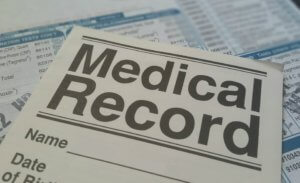 This is the name of the fully automated and integrated system Weaver developed which coordinates hospital personnel to screen patients for potential or preexisting problems with sleep breathing disorders (namely, sleep apnea).
This is the name of the fully automated and integrated system Weaver developed which coordinates hospital personnel to screen patients for potential or preexisting problems with sleep breathing disorders (namely, sleep apnea).
Sleep Navigator also refers to the title of the medical professional trained to perform these brief interviews with patients to assess for respiratory concerns during their stay.
The Sleep Navigator spends most of their time looking at other health conditions through the lens and context of sleep health and breathing problems. The integration of the protocol also makes it easier for healthcare providers and patients alike to improve therapy compliance rates long after they have left the hospital with CPAP in tow.
Is sleep disordered breathing really about sleep?
“What we’re really talking about here is respiratory problems, and not sleep,” Weaver said in a recent interview. “The word sleep is passive and undervalued,” she said, relating how using the term respiratory to define care obstacles is more likely to raise the eyebrows of hospital-based risk managers.
“Many studies have shown sleep apnea has a direct impact on the cost of readmissions, longer length of stay, and a higher risk for mortality,” she asserts in her 2016 report, “Sleep Navigator in the Hospital Setting.”
Sleep breathing disorders, which are legitimate sleep disorders, are also legitimate respiratory disorders. When respiratory problems of any kind occur, and are not addressed, studies repeatedly show increased risks for all kinds of chronic health problems, from diabetes and stroke to congestive heart failure and atrial fibrillation to mental illness, even cancer.
How do Sleep Navigators integrate sleep health as a vital sign?
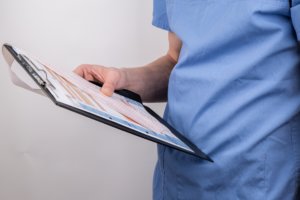 A typical Sleep Navigator is a sleep technologist or clinical sleep health educator who “makes rounds” during the day, visiting up to 15 admitted patients for screenings that last around 30 minutes.
A typical Sleep Navigator is a sleep technologist or clinical sleep health educator who “makes rounds” during the day, visiting up to 15 admitted patients for screenings that last around 30 minutes.
During these visits, they investigate patients’ overall health profiles as well as screen for potential sleep breathing problems and provide patient education.
Some of the tools for screening are familiar for those with OSA, but Weaver’s team also added questions more specific to central sleep apnea to help ferret out patients who may also struggle with this less common sleep breathing disorder. In any case, sleep becomes the indicator or vital sign that clarifies who may need to manage significant respiratory issues during sleep.
Sometimes patients already know they have problems, but they may not be treating them. Other times, patients are completely unaware they might have sleep breathing problems.
Patients who are at highest need for a sleep apnea screening, made by the Sleep Navigator during their visit, include those who are already on record for having the following co-morbidities:
- Congestive heart failure
- Chronic obstructive pulmonary disease
- Stroke
- Heart disease
- Atrial fibrillation
- Resistant hypertension
- Kidney disease
- Obesity (defined as a body mass index of over 40)
- Nocturnal hypoxemia
Other data collected from the patients themselves can be part of the flagging process for identifying those who need a sleep apnea assessment. Patients might report:
- Poor sleep in general
- Loud snoring or witnessed apneas (or both)
- Chronic fatigue
- Poor sleep hygiene and habits
If a Sleep Navigator finds a patient is at higher risk for respiratory problems due to their co-morbidities, they are then given some specific educational tools for addressing their concerns (such as information about sleep hygiene), and a consult with a sleep physician is arranged.
Weaver points out that “everything is integrated into the system,” which means that every healthcare professional who has access to these patients’ records will see this information and be able to respond to it more appropriately moving forward.
For example, a patient shown to be at high risk for sleep apnea will be handled by the system differently if they are preparing for a surgical procedure, as preexisting respiratory conditions warrant different preparations for those scheduled for operations that require sedation.
How Sleep Navigator benefits patients

The purpose of using a Sleep Navigator is specifically to identify unrecognized breathing problems in chronically ill patients so that they can be diagnosed and treated appropriately.
Better respiratory health can lead to much better overall health and quality of life. (Hmmm, #SleepBetterFeelBetter, right?)
It can also greatly reduce the numbers of hospital readmissions, an ongoing concern not only for patients but for hospitals, which are mandated to reduce these by the federal government.
Weaver’s research in study outcomes following 154 patients who experienced the Sleep Navigator screening has uncovered some pretty significant findings, with more recent followup available soon.
Patients with cardiovascular-specific problems (arrhythmias, cerebrovascular accidents, heart failure) showed the most signs of severe (and often untreated or undertreated) sleep apnea.
Other patients also had significant respiratory problems that weren’t getting the attention they needed, including those with end-stage renal disease and chronic obstructive pulmonary disease.
Among patients who went on to have sleep studies:
- 87 percent of patients had abnormal test results showing the presence of underlying sleep disorders
- 79 percent of patients had sleep disordered breathing problems
- 40 percent of those who were found to have sleep disordered breathing were considered emergent (severe)
Other findings show evidence of other sleep disorders that had gone undiagnosed before, such as periodic limb movement disorder and complex apnea (a combination of obstructive and sleep apnea). Meanwhile, only 14 percent of patients had normal sleep study results.
In keeping with this week’s Sleep Awareness Week theme, if you sleep better, will you actually feel better? The Sleep Navigator program can objectively answer with a resounding Yes. Not only will you feel better, but you are more likely to live longer.
Why Parrish, and why Weaver?
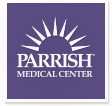 It turns out that part of the reason the Sleep Navigator system works so well at Parrish is due to the fact it’s the only Joint Commission integrated care network around. “We think differently here,” Weaver said.
It turns out that part of the reason the Sleep Navigator system works so well at Parrish is due to the fact it’s the only Joint Commission integrated care network around. “We think differently here,” Weaver said.
In addition, she has more personal reasons for seeing the project to fruition, which required a commitment of 8 extra hours of work a day on top of her full time schedule to complete: her father, a noncompliant CPAP user, had passed away from a heart attack at age 53.
The Sleep Navigator program is a Win-Win-Win
 From Weaver’s experiences with the Parrish program, it’s clear that patients were better served by this simple, brief encounter with their assigned sleep navigator. That’s Win number one.
From Weaver’s experiences with the Parrish program, it’s clear that patients were better served by this simple, brief encounter with their assigned sleep navigator. That’s Win number one.
The second Win goes to the healthcare professionals who work directly with these patients by treating sleep health as a vital sign; having this additional knowledge about their patients can influenceand personalize the way they diagnose and treat these patients.
Finally, the third Win is a big one happening backstage: hospitals and sleep centers benefit from delivering stronger objective data to insurance payers, who are more likely to reimburse for treatmentsbased on proven therapeutic need.
Also, based on Weaver’s data alone, readmissions can be decreased dramatically, an elusive goal for many hospitals which still must meet this 21st century policy demand or risk penalties.
The future of Sleep Navigator
Will other hospitals launch their own programs following the Parrish Sleep Navigator model? As far as Weaver is aware, there aren’t any doing so at this time, though she insists that “it would be a big impact on their readmission rates if they did do it. The data is there.”
Which is part of the challenge. Hospital administrators need to see data before they move to make changes that include an entirely new procedural protocol. However, Weaver is certain that, with more research in the arena of sleep breathing disorders and chronic illness co-morbidities, it will eventually inspire systemic efforts to treat sleep as a vital sign.
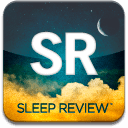 Meanwhile, her article, “How One Sleep Center Flags High-Risk Apnea Patients, Raises Its Volume, and Lowers Hospital Readmissions,” published in Sleep Review in December 2015, which featured the success story at Parrish, led to a flood of phone calls by physicians wanting to learn more.
Meanwhile, her article, “How One Sleep Center Flags High-Risk Apnea Patients, Raises Its Volume, and Lowers Hospital Readmissions,” published in Sleep Review in December 2015, which featured the success story at Parrish, led to a flood of phone calls by physicians wanting to learn more.
In the end, the problem is not one of lack for wanting. “It’s all about finance,” Weaver admits. “The roadblock is the administration.”
She suggests that physicians gather and focus on the data to find ways to “put two and two together” in a location such as the intensive care unit, where OSA is frequently part of the patient Big Picture. Taking that field-based evidence to stakeholders might be how doctors inspire the roll-out of a new Sleep Navigator protocol in their own hospitals.
“I’m hopeful that many sleep doctors will take this data from our research and think outside the box to be more proactive about preventing readmissions,” Weaver says. She also hopes they will reach out to her organization for help and ideas. “We know that not everybody can do it exactly the same way we do,” she says, but “they can customize the process” with the help of Weaver and her crew.
She also hopes an upcoming feature article on Sleep Navigator in A2Zzz, the magazine for the American Association of Sleep Technologists, will help shine more light on the program.




